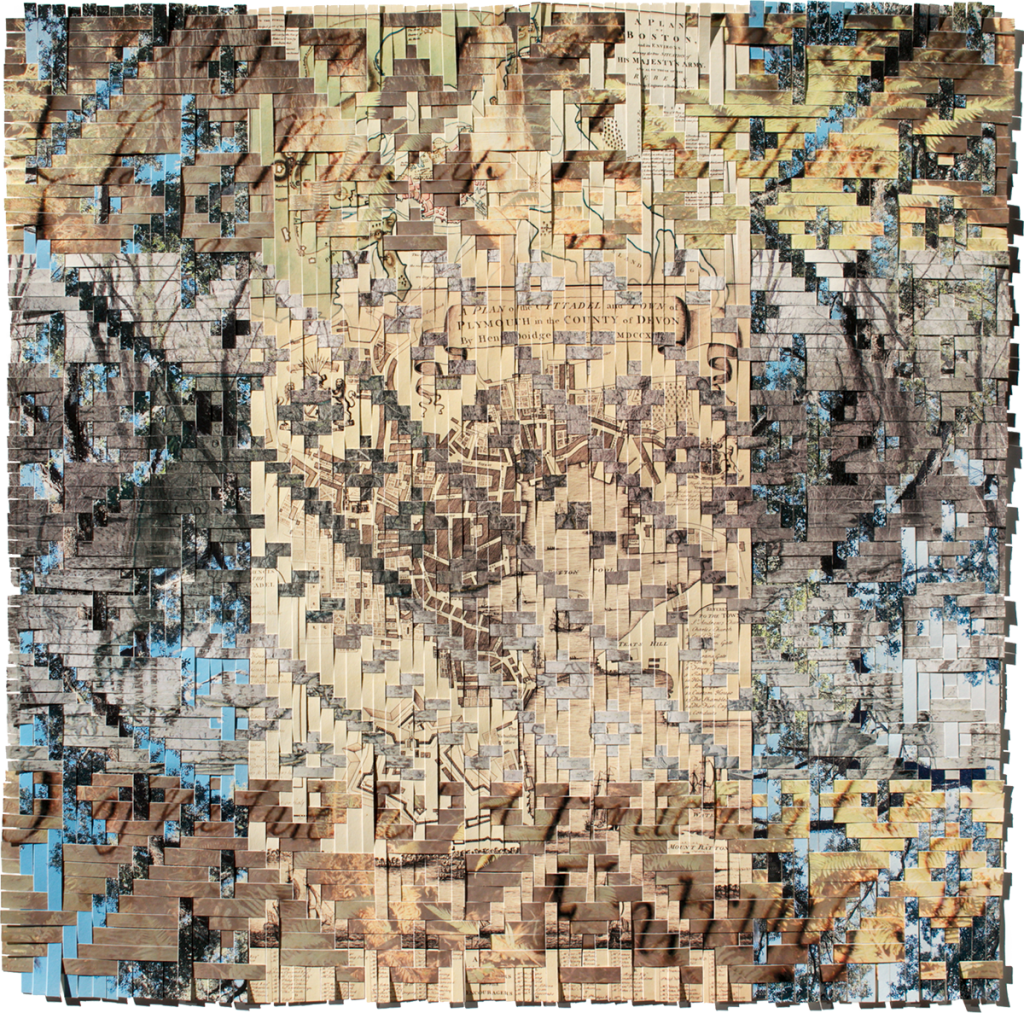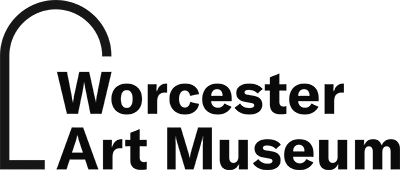Spring Exhibition Will Showcase Meditations on Place and Identity Created in the Past 20 Years, Featuring Nine New Acquisitions

This spring, the Worcester Art Museum will present New Terrain: 21st-Century Landscape Photography, a new exhibition focused on how 21st-century artists use different photographic processes to explore the concepts of landscape and place. Comprising approximately 30 artworks created over the past 20 years, the exhibition will highlight a wide range of techniques—including 3-D printing, weaving, embroidery, collage, and the use of nontraditional materials like rusted cans and lake water—that reinterpret the traditional practice of photography. Through these artworks, New Terrain serves as an entry point into deeper narratives about technology, identity, political activism, climate change, and history through the concept of the landscape. Organized by Nancy Kathryn Burns, the Museum’s Stoddard Curator of Prints, Drawings and Photographs, New Terrain will be on view April 6 through July 7, 2024.
“This exhibition offers us a chance to ask how the idea of landscape can be taken in unexpected directions by the use of different processes and materials,” Burns said. “This idea is especially relevant to bring to New England, which has a long-standing artistic tradition that often interprets the landscape as a direct representation of the external world; I’m excited to see that tradition turned on its head.”
New Terrain will be the first chance for visitors to the Worcester Art Museum to see nine recent acquisitions that reach across the globe. These include works by American artist Dawoud Bey, Taiwanese artist Wu Chi-Tsung, American (b. Azerbaijan) artist Elman Manismov, American artist Dread Scott, Choctaw / Chitimacha artist Sarah Sense, Jamaican-born artist Paul Anthony Smith, and French artist Paul Vinet. These acquisitions expand on the Museum’s collection of photography as well as its significant holdings in the landscape genre, which has grown particularly strong in the American and European traditions. The premise of New Terrain reflects this ongoing strategy to diversify the collection to push the boundaries of what landscape—and art of all genres—looks like.
“At a time when we are thinking more and more about our planet and the artistic traditions created within it, New Terrain shows us that there is always more to learn,” said Matthias Waschek, the Jean and Myles McDonough Director of the Worcester Art Museum. “We are thrilled to be able to investigate these ideas primarily through the collection of the Worcester Art Museum.”
The exhibition will be loosely organized into four thematic sections. One section will focus on non-traditional applications of photo-based process. One example is American artist Meghann Riepenhoff’s Littoral Drift #3 (2015), which employs cameraless photography. Riepenhoff dips light-sensitive cyanotype paper into the ocean to create an image that is arguably more representative of a seascape than a vista captured through more conventional photographic practices due to its direct relationship to the ocean. Similarly, two works by Alison Rossiter, an American artist who works with expired photo paper, will demonstrate how artists can manipulate the photographic process to create images that mimic the look and atmosphere of the landscape.
Another section in New Terrain will ask how artists use and consider the implications of technology as a means of reconsidering both landscape and society’s changing relationship to photography. Penelope Umbrico’s Range: of Masters of Photography (2014) is one work that demonstrates this approach, featuring 36 individually framed pigment prints. The American artist sources well-known images of mountains from the internet and edits them using camera apps on her iPhone, creating new images through layers and filters. Shown together, these images represent a disruption of the perceived strength and stability of the landform. Another example is Bumtown (2015) by Canadian artist Stan Douglas. Measuring approximately 5 x 10 feet, this monumental work was created from sutured archival photographs of 1940s Vancouver, Canada with digital imaging using an advanced 3-D computer software called Maya, a program typically used in animation. Depicting a scene from a neighborhood that once existed and has since been razed, Bumtown uses technology to blur the line between historical documentary photographs and contemporary imaging, creating an uncanny relationship between the real and the unreal, like an elaborate theater set.
Many of the artworks in New Terrain also use photography and the landscape genre to explore history and memory. This section includes work from American artist David Maisel’s Terminal Mirage series, a project that examines the impact of human intervention in nature and the outcomes seen in landscapes. Maisel traveled around the periphery of Utah’s Great Salt Lake to capture aerial photographs that record the damage and pollution inflicted on this space by humans. The exhibition will also include a photograph from the Voyages series by London-based artist duo Jonathan Anderson & Edwin Low. For this series, the artists photographed model ships in storage at the Science Museum in London. Leaving the ships still shrouded by their protective sheeting, the resulting photographs look more like a 17th-century Dutch painting than a contemporary straight photograph.
The exhibition will also consider the theme of identity, which can be seen in an artwork by Bey, who is known for representing African American life through his photography. Featured in the exhibition, Bey’s large-scale photograph Untitled #19 (Creek and Trees) is approximately 4 x 5 feet in size. The work comes from his 2017 series titled Night Coming Tenderly, Black, a group of images depicting places around Ohio that are thought to have been part of the Underground Railroad’s route to freedom. Also featured, the Museum commissioned Sense to create A Plan of Boston (2023), which she made by weaving together archival inkjet prints and two 17th-century colonial maps staking claim to land known-today as Plymouth and Boston. Sense’s photo-weaving practice incorporates traditional basket techniques from her Chitimacha and Choctaw heritage.
Sense will be the featured speaker of the Museum’s Spotlight Series of expert talks on Sunday, April 21. This event will be part of a series of public programs related to the exhibition, including regular tours. The Museum will also host an after-hours public event on the evening of April 6 to celebrate the exhibition’s opening. More information about related programs and events will be available at worcesterart.org.
This exhibition is generously supported by the Fletcher Foundation. It is also funded in part by the Hall and Kate Peterson Fund and WAM Exhibition Fund.
About the Worcester Art Museum
The Worcester Art Museum creates transformative programs and exhibitions, drawing on its exceptional collection of art. Dating from 3000 BCE to the present, these works provide the foundation for a focus on audience engagement, connecting visitors of all ages and abilities with inspiring art and demonstrating its enduring relevance to daily life. Creative initiatives— including pioneering collaborative programs with local schools, fresh approaches to exhibition design and in-gallery teaching, and a long history of studio class instruction—offer opportunities for diverse audiences to experience art and learn both from and with artists.
The Worcester Art Museum, located at 55 Salisbury Street in Worcester, MA, is open Wednesday through Sunday from 10am to 4pm. For more information, visit worcesterart.org.
For more information, please contact:
Madeline Feller
Worcester Art Museum
MadelineFeller@worcesterart.org
508-793-4373
Sascha Freudenheim
PAVE Communications & Consulting
sascha@paveconsult.com
917-544-6057
Image credit: Sarah Sense, A Plan of Boston, 2023. Woven archival inkjet prints with tape on Hahnemuhle bamboo paper on white board, Chapin Riley Fund at the Greater Worcester Community Foundation, 2023.35

